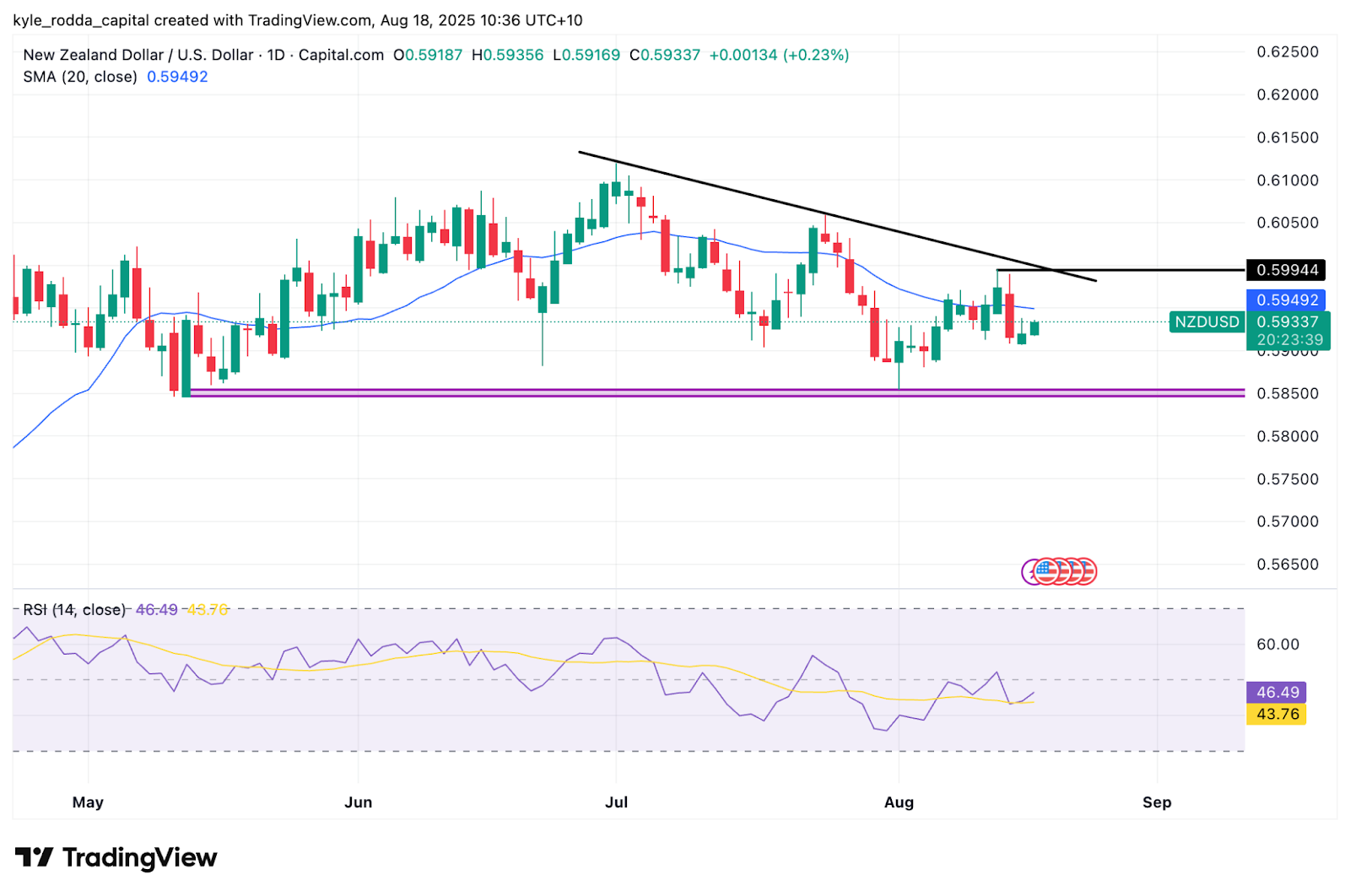RBNZ expected to cut rates again as labour market softens
The RBNZ is expected to lower interest rates to 3.00%
The Reserve Bank of New Zealand is set for another 25bp cut this week as inflation cools toward target, growth softens and labour-market slack becomes more apparent.
New Zealand inflation remains in target band as labour market softens
New Zealand’s inflation pulse has moderated. Headline CPI, at 2.7%, remains inside the RBNZ’s 1–3% target band and quarterly price growth has slowed.. Forward-looking indicators point the same way: medium-term inflation expectations have slipped closer to the midpoint, suggesting price-setting behaviour is normalising after a long, sticky phase.
The labour market is loosening in tandem as growth slows. Unemployment has pushed to multi-year highs at 5.2% and broader underutilisation measures point to more spare capacity than a year ago. In short, the economy remains weak, contributing to joblessness and diminishing upside risks to prices—conditions that justify measured policy relief.
An RBNZ rate cut likely amid growth risks and contained price pressures
Markets and forecasters are leaning toward a quarter-point reduction, taking the Official Cash Rate to 3.00% and building on May’s cut. Swaps markets imply a meaningful chance of at least one more move by year-end, but not a rapid easing cycle. The question is less “if” the Bank trims again and more “how far and how fast” it signals from here.
The Monetary Policy Statement will be closely watched as a result. In the absence of more comprehensive forecasts at this meeting, the market will scrutinise guidance for confirmation that the projected trough rate sits in the upper-2s before a gradual drift back toward neutral. The markets will also parse how the RBNZ balances sees global trade risks, and what impact this may have on economic fundamentals.
A materially more dovish profile—either a lower trough or stronger bias toward further cuts—would surprise markets, likely pulling front-end yields lower and easing financial conditions Conversely, a cautious tone that highlights residual domestic stickiness from the single mandated RBNZ would cap how much additional easing gets priced in.
The NZD/USD remains rangebound in search for catalysts
For NZD/USD, the near-term impulse hinges on the pairing of action and guidance. A standard 25bp cut with an essentially unchanged OCR path and neutral tone likely delivers only a modest, possibly fleeting, dip as focus shifts to where rates settle in 2026. A more dovish track or language would create more durable downward pressure by compressing interest-rate differentials and reinforcing the view of a gentle but persistent easing cycle.
Global factors complicate the picture. Trade policy uncertainty and slower global growth typically weigh on commodity-sensitive, risk-correlated currencies such as the Kiwi. At the same time, the US dollar’s broader trend will be set by relative growth, real-yield differentials and the Federal Reserve’s messaging into Jackson Hole and the next run of US data.
From a technical perspective, the NZD/USD remains rangebound between 0.6100 and 0.5850. A downward sloping trendline, where the most recent lower-high sits around 0.6000, looms as major short-term resistance. Critical support is at 0.5850, a break of which may herald further downside for the pair.
 (Source: Trading View)
(Source: Trading View)
Past performance is not a reliable indicator of future results.